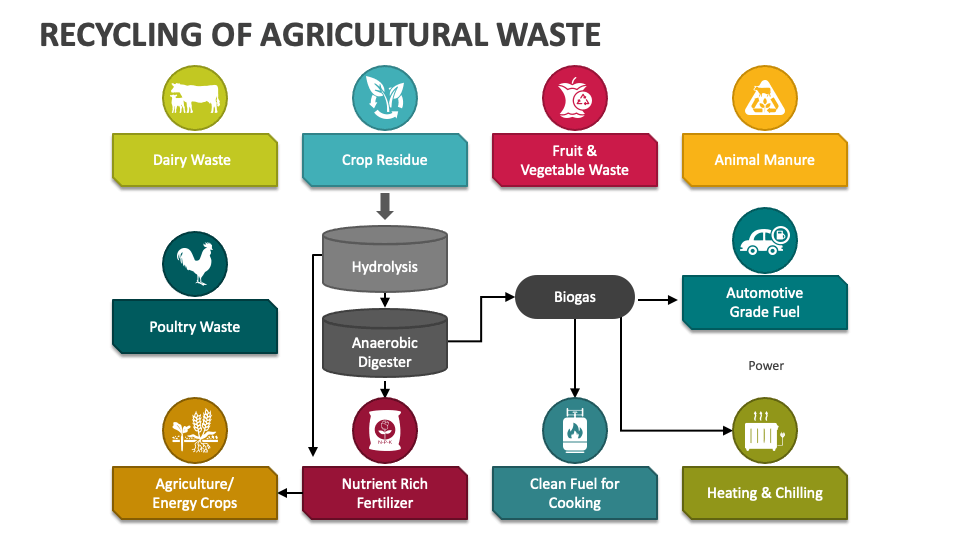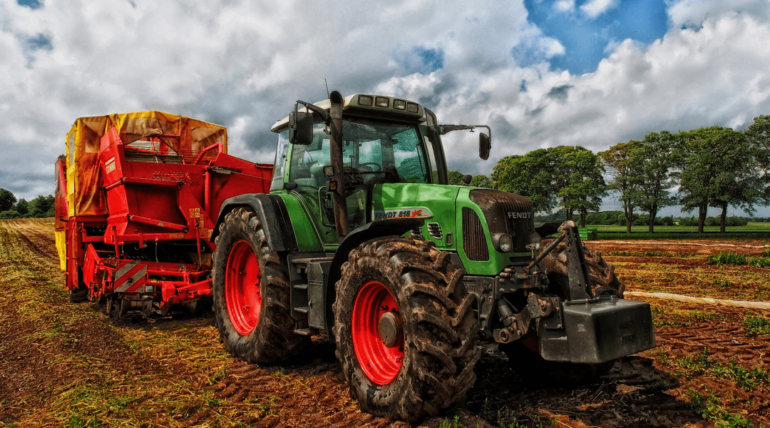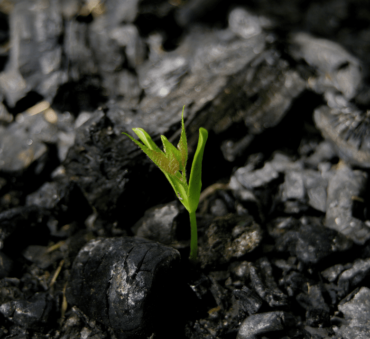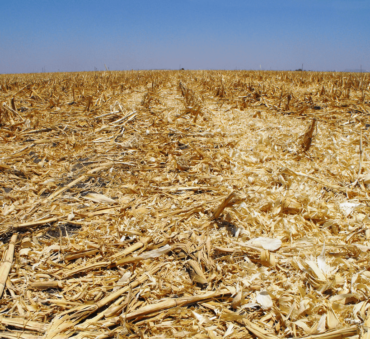When discussing the issue of waste management, we often focus on municipal or industrial waste. But, there’s another key player in the waste management game: agricultural waste. This type of waste, originating from farms and related activities, has unique characteristics and demands a specialized approach for its disposal and treatment. Let’s shed light on this topic and answer pertinent questions like, what is farm waste management? How to dispose of agricultural waste? And how does agricultural waste affect the environment?
What is Agricultural Waste?
At its core, agricultural waste refers to the leftover and/or discarded by-products of various agricultural operations. This comprises a wide spectrum of materials, from the residues of crops (the unused parts of crops left behind after harvesting), livestock manure, remnants of harvested market produce, packaging, pesticides, and other chemical fertilizers used on the farm.
The Importance of Proper Agricultural Waste Disposal
At this stage, you might be asking, “Aren’t most types of agricultural waste organic and decompose naturally?” The truth is that it isn’t that simple.
While it’s true that a significant portion of agricultural waste is organic and capable of biodegrading, the sheer volume produced, especially from large-scale farming operations, can lead to grave environmental, economic, and health issues if not properly managed. Consequently, proper agricultural waste treatment and disposal cannot be emphasized enough.
Classification of Farm Waste
To manage farm waste effectively, we need to understand its various forms, as each category carries specific characteristics and poses unique challenges for disposal and management.
1. Organic Waste
- Crop residues: crop residues are the parts of the plant that are left in the field post-harvest, such as stalks, leaves, husks, and stems. They can be a significant source of farm waste, particularly in large-scale grain production. However, they are typically high in cellulose and lignin and provide a good source of carbon, which is essential for soil fertility.
- Animal manure: primarily feces and urine, animal waste constitutes a significant part of organic farm waste. It’s produced in large quantities, especially in intensive livestock operations, and so the mishandling of animal manure can lead to serious environmental issues, such as water and air pollution.
2. Inorganic Waste
- Pesticides and Chemicals: herbicides, and synthetic fertilizers are common examples of inorganic agricultural waste. These chemicals are extensively used in modern agriculture to control pests and enhance crop yields. However, residues and leftover products can linger in the environment, potentially contaminating soil and water resources and harming people and non-targeted organisms.
- Plastics and Packaging: the use of plastics in farming is pervasive, from crop coverings to packaging materials. However, plastics take hundreds of years to decompose and can cause severe environmental harm if simply left out. This includes harm to wildlife and contributions to the global plastic pollution crisis.
3. Agricultural By-products
- Milk Waste: it refers to excess or spoiled milk and other dairy products discarded during farming operations. This waste can occur due to a variety of reasons, such as overproduction, improper storage, or contamination.
- Slaughterhouse Waste: it includes the parts of livestock animals that are not intended for human consumption, such as bones, blood, skin, feathers, and organs. This waste in particular requires very careful handling and consideration due to its potential for disease transmission. Conversely, if properly recycled, it can be converted into valuable, sustainable products like biofuel, compost, or animal feed.

The Impact of Improper Agricultural Waste Disposal
The implications of improper waste disposal extend far beyond the farm’s boundary. The repercussions of neglecting agricultural waste management can echo in the environment, economy, and human health.
Environmental Consequences
- Soil Pollution: farm waste, especially chemical waste like pesticides and herbicides, can significantly degrade the quality of the soil. These chemicals can accumulate in the soil over time, leading to toxicity and damaging its overall health. This, in turn, can affect plant growth and reduce farm productivity.
- Water Pollution: improper agricultural waste disposal can also contaminate water bodies and groundwater resources. For instance, runoff from fields can carry animal manure and chemicals into rivers, lakes, and even infiltrate into groundwater sources. This can disrupt aquatic ecosystems and contaminate the drinking water supply.
- Air Pollution: certain forms of agricultural waste, when not properly managed, can contribute to air pollution. For example, the decomposition of organic waste like animal manure can release harmful gases like methane, a potent greenhouse gas. Similarly, the burning of crop residues contributes to air pollution by releasing particulate matter and other pollutants that contribute to climate change.
Economic Consequences
- Cost of Pollution Cleanup: cleaning up the pollution caused by agricultural waste can be a significant economic burden, as this may involve the cost of water treatment, soil remediation, or air pollution control measures. These costs are typically borne by society at large through taxes or increased prices for water and other services.
- Loss of Agricultural Productivity: poor waste management practices can lead to soil degradation, pest infestations, and disease outbreaks, all of which can reduce farm productivity, leading to a loss of income for farmers and an increase in food prices for consumers.
Social and Health Consequences
- Health Risks for Farm Workers: they are often the most directly exposed to the risks associated with agricultural waste. This exposure to harmful chemicals or pathogens in the waste can bring about various health issues, including skin diseases, respiratory problems, and possibly even cancer.
- Community Health Impacts: waste leaching into water supplies can lead to an array of health issues, ranging from gastrointestinal diseases to more severe conditions such as cholera or even cancer. Additionally, the air pollution caused by burning crop residues or methane emissions from animal waste management can result in respiratory ailments among community members.
Farm Waste Disposal Regulations and Laws in the US
Given the significant impacts of agricultural waste, it is regulated by various laws in the United States. These laws aim to ensure that agricultural waste is managed in a manner that minimizes harm to the environment and public health.
Federal Laws and Regulations
1. The Clean Water Act (CWA)
The CWA sets wastewater standards for industries, including agriculture, and includes guidelines for managing agricultural runoff to prevent contaminants from entering water bodies. These measures help minimize the effect of agricultural waste on the quality of the nation’s water resources.
2. The Clean Air Act (CAA)
Under the CAA, the Environmental Protection Agency (EPA) sets limits on certain air pollutants, including those from agricultural sources. For instance, larger farming operations, such as animal feeding practices, may fall under regulations to limit emissions of pollutants affecting air quality.
3. The Resource Conservation and Recovery Act (RCRA)
This governs the disposal of solid and hazardous wastes. While many farm wastes are exempt from RCRA regulations, certain types of farm waste, like specific unused pesticides, could be classified as hazardous waste and require special handling and disposal under this Act.
4. The Comprehensive Environmental Response, Compensation, and Liability Act (CERCLA)
Commonly known as the Superfund, CERCLA is a federal law designed to clean up sites contaminated with hazardous substances. While it primarily targets industrial pollution, it can also apply to agricultural pollution in certain situations.
5. The Federal Insecticide, Fungicide, and Rodenticide Act (FIFRA)
FIFRA governs the sale, distribution, and use of pesticides. It requires farmers to use registered pesticides in accordance with label instructions to minimize harmful environmental impacts.
State Regulations and Programs
On top of federal laws, each state can also have its own regulations related to agricultural waste management. These regulations vary from state to state but are typically designed to address the unique environmental challenges within each state. They may include measures such as stricter controls on waste disposal near sensitive ecosystems, incentive programs for waste reduction, and guidelines for the proper storage and treatment of farm waste. Compliance with these state-specific regulations is essential for farmers and other agricultural entities, in addition to adhering to federal laws.

Best Practices for Agricultural Waste Disposal
Effectively managing agricultural waste recycling solutions is not just about efficient disposal. It involves a hierarchy of actions and solutions aimed at waste prevention, reduction, reuse, recycling, energy recovery, and, as a last resort, safe disposal.
- Reduction: the first and most desirable step. Techniques for reducing waste could involve altering farming practices to limit waste generation. Precision agriculture, for example, can help curtail the use of fertilizers and pesticides, thereby cutting down on chemical waste. Likewise, practices such as crop rotation and cover cropping can decrease dependence on chemical inputs and reduce crop residue.
- Reuse: it involves finding secondary uses for agricultural waste that can’t be reduced. For instance, crop residues can be used as a building material for plants, providing a protective layer that reduces weed growth and soil erosion.
- Recycling: when reduction and reuse aren’t possible, recycling is a viable option. Methods for recycling waste can range from composting organic waste to reprocessing plastic waste into new agricultural products.
- Energy Recovery: when we cannot recycle waste, energy recovery provides another sustainable solution. The most common method is anaerobic digestion, where organic wastes, including manure and crop residues, are broken down by microorganisms, generating biogas that can be used for heating and electricity generation.
- Safe Disposal: as a last resort, when all other options have been exhausted, waste is safely disposed of. This can involve carefully engineered landfills or incineration. Regardless of the method, the aim is always to minimize the environmental impact.
Conclusion
Embracing these best practices for agricultural waste solutions is not just about adhering to regulations or minimizing environmental impact. It’s also about realizing the potential of waste as a resource. That’s exactly what Shapiro aims to achieve with its robust waste management and sustainability services, turning organic waste from a challenge into an opportunity. Its commitment to sending zero waste to landfills serves as a beacon, guiding us toward a future where waste is not just disposed of, but is valued, reused, and recycled, fostering a more sustainable and productive agricultural sector.
Frequently Asked Questions
Agricultural waste includes a variety of materials generated as a result of agricultural activities. This includes organic waste like crop residues and animal manure, inorganic waste such as pesticides and plastics, and agricultural by-products like milk waste and slaughterhouse waste.
Charcoal briquettes can be made through a process called pyrolysis, where the waste is heated in a low-oxygen environment to produce charcoal. This charcoal is then mixed with binding agents and compressed into briquettes.
Agricultural waste can be reduced through a variety of methods, such as adopting precision agriculture techniques to reduce the use of fertilizers and pesticides, practicing crop rotation and cover cropping to minimize crop residues, and implementing better livestock management practices to manage manure.
Agricultural waste can lead to water pollution when improperly managed waste materials, like animal manure and pesticides, leach into water bodies. This can cause an excess of nutrients, leading to harmful algal blooms as well as contamination with harmful bacteria or chemicals.
Agricultural waste can be recycled through several methods. Composting and anaerobic digestion are popular methods for recycling organic waste, while inorganic waste like plastics may be recycled through specialist processes. Other methods include biomass valorization to convert waste into valuable products like biofuels and bioplastics.
Farm waste can be managed by implementing a waste management system that includes waste reduction, reuse, recycling, and safe disposal practices. Compliance with relevant laws and regulations is also key to ensuring responsible waste management.
The decomposition time for agricultural waste varies depending on the type of waste and environmental conditions. For example, crop residues might take a few weeks to a few months to decompose in a compost pile, while certain types of plastic used in agriculture can take hundreds of years to decompose in the environment.
Waste from farms can harm the environment in several ways. Improper disposal can lead to soil, water, and air pollution. Excessive nutrients from waste can cause over-fertilization of water bodies, leading to harmful algal blooms. The methane produced by decomposing organic waste is also a potent greenhouse gas.
Agricultural waste can produce a variety of valuable products. This includes compost and biofertilizer from organic waste, biogas from anaerobic digestion of manure, and biofuels and bioplastics through biomass valorization processes.
Baily Ramsey, an accomplished marketing specialist, brings a unique blend of anthropological insight and marketing finesse to the digital landscape. Specializing in educational content creation, she creates content for various industries, with a particular interest in environmental initiatives.



